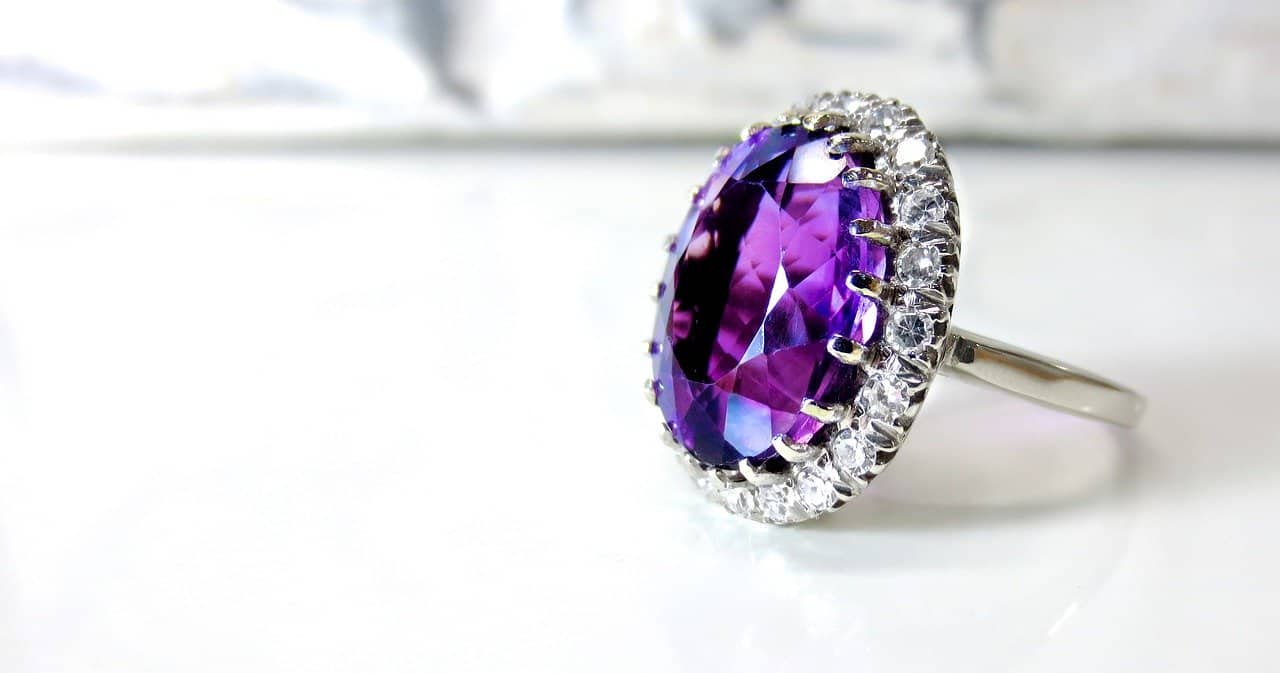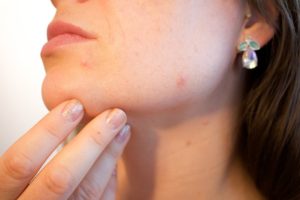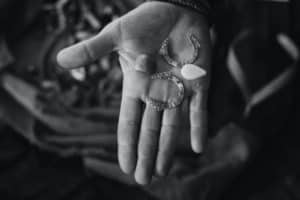Okay, I admit! I just can’t get enough of white gold jewelry and the vivid designs which come to life with the white sheen are just beyond compare. But I have also known the sheen loss which happens in white gold jewelry and have struggled enough, finding corrective and preventive methods to keep my white gold jewelry bright and shiny.
So for the benefit of all, here is what my journey with keeping white gold jewelry gleaming, clean and shiny has been like.
THE THING ABOUT WHITE GOLD
Before we kick in to the meat of it, its good to have an understanding of what white gold really is and what colour should you expect this jewelry to be. White gold as we know it, is an alloy having yellow gold mixed with trace metals such as palladium, zinc, silver or nickel(yeah!!). While 18 Karat white gold jewelry has about 75% Gold in it, 14 Karat white gold jewelry contains only 58% gold. Some white gold jewelry items may also be then plated with a layer of rhodium, which gives it a more white-silvery look and shimmer, distinguishing it from yellow gold jewelry.
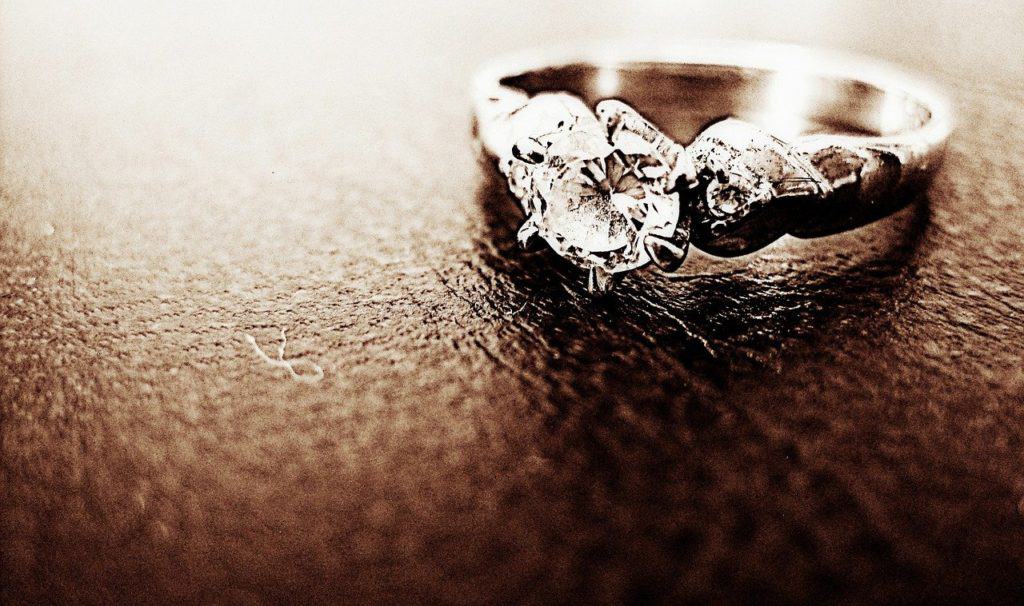
Why is white gold not yellow?
The colour of your jewelry depends largely on 2 factors:
1. Metal Composition
The simple reason why white gold isn’t yellow, in spite of being composed of yellow gold is the amount of other metals in it. If it makes sense, 18 Karat white gold is more “Yellow” (75% Gold) than 14 Karat gold (58% Gold) as it has higher content of gold.
In addition, white gold also includes trace metals such as zinc, which make it have a colour different than yellow.
2. Any external coating
These days, a lot of white gold items have an outer rhodium layer with which it is polished. This gives the pieces a white sheen. The rhodium coating can be done on both 14 Karat, 18 Karat pieces or even 22 karat pieces and the result would be quite identical as the layer completely covers the base metal.
THE FADING REASONS
Before we look at the remedy, its important to diagnose the cause of the ailment. So here’s a look at what you can expect white gold jewelry fading or turning yellow to be be like, which we will then try and tackle.
Is it normal for white gold to turn yellow?
White gold certainly can and in sufficient time, will turn towards becoming more yellow than white. The reason for this is two folds- on one hand the percentage composition of the alloy is about 58-75 percent pure yellow gold, and any fading of the supporting in metals will make this yellow color profound. Secondly, the rhodium polish which most white gold jewelry pieces are covered with, can rub off and fade over time, making the base metal visible and overall white color of the piece appear more yellow.
Why is my white gold turning yellow?
The major reasons why white gold may turn yellow are the overall vintage of the jewelry, contact with your body, exposure to chemicals and general wear and tear. Any or many of these can work together and fade away the shimmering white colour of your white gold jewelry, turning it yellow.
Lets look into these in detail, which will help us have an understanding of our topic at hand.
1. JEWELRY VINTAGE : One of the major reasons why your white gold jewelry may be turning yellow is just its age of use. If you have been wearing it for about 1 to 3 years now, chances are that the rhodium layer would have started to give away, beginning to expose the yellow colour of the majority component in the jewelry piece – gold.
2. CONTACT WITH BODY : The body perspires through sweating and releases toxins which can cause damage to the rhodium layer or the outer surface of the part of jewelry which is in direct contact. This is the reason why you would see shanks of white gold rings, or contacted face of pendants turning yellow compared to other parts.
3. CHEMICAL EXPOSURE : If you tend to wear your white gold jewelry pieces very frequently and without proper care, there may be chances that it may be exposed to chemicals in perfumes, deodorants, moisturizers, creams and the environment in general. All of these can affect the metals (Especially the ones in the 25% chunk) of your white gold jewelry, hence bringing about a reduction in its white shimmer.
Even if your white gold jewelry piece has been rhodium plated, chances are that chemical exposures from cosmetics and household cleaners etc can trigger deterioration owing to catalysing nature of rhodium.
4. GENERAL WEAR & TEAR : Rough handling is yet another factor which can cause your white gold jewelry to turn yellow. The tongs or prongs sections of rings and the frequently rubbed inner sides of white gold chains are some of the most susceptible areas where rhodium polish or coating can fade off easily. In addition, exposure to water, thrusts or jerks to the jewelry piece can also lead to this wear and tear.
Just so that you have a realistic view of what colours to expect your white gold jewlery to be, here is a great video from JACOJE LYNX , that I gained much from.So check it out!
Is it normal for white gold to tarnish?
If the word ‘tarnishing’ is intended to mean losing the bright white colour and turning pale yellowish, then yes its normal for white gold jewelry pieces to do so, because of the weaning of the microns thick rhodium layer and the true yellow gold colour superseding. The initial symptoms would be the base yellow gold showing at places where Rhodium has chipped off, eventually showing the base layers at many places and making the peace look unappealing. Rhodium plating lasts for anywhere between 2-5 years depending upon several factors.
Physical change of properties (as generally tarnishing is perceived) may happen over 3 to five years, with the trace metals reacting with outside chemicals. However since they are present in very small quantities and that too fully amalgamated in the gold, this ‘tarnishing’ will not be very visual.
How long does white gold last?
White gold jewelry as such will last you lifetimes, though it might change colours and a bit of texture. The rhodium coating over it will last anywhere between 1 to 3 years and this is when you would have to get it redone. The structural composition of white gold jewelry (75% yellow gold and 25% trace metals) is strong enough to give it a very long useful life.
Does white gold turn black?
White gold jewelry pieces are more commonly seen to turn pale yellowish from white (the colour of the rhodium plating), but they may turn greyish or black at times. This can happen if the rhodium is exposed to chemicals like chlorine, which may kick in the catalytic properties of rhodium and make it go greyish black. This can also happen with the trace metals present in the piece, reacting with any acid in the environment and hence turning black.
– Old Rhodium : A rather rare occurence but many people also experience that their white gold jewelry piece has turned greyish black post a rhodium re-plating. This can happen if a vintage rhodium sample was used for plating by your jeweler. The good thing about this defect is that it is noticeable almost immediately post the re-plating and hence you may confront your jeweler.
– Highly acidic environment : When it comes to white gold jewelry coming in contact with acidic environment, discoloration depends on 2 factors
a) Condition of the outer coating:
The outer coating is generally Rhodium or can also be platinum. Both these metals are inert and do not react with acids in the environment unless exposed to very high temperatures (600 degree Celsius). If the outer coating is intact, the underlying metals are largely safe against acids.
b) Percentage of constituent metals
Gold may react with acids in the environment and turn green or black. Zinc is also fairly reactive and turns yellow or pale. Your jewelry can have anywhere between 0 to 15% Zinc in it. Depending upon the percentage of Zinc in your jewelry, your jewelry will show signs of tarnishing. This is a good source that discusses how Zinc reacts under different conditions in detail.
If your white gold jewelry has other metals like palladium, platinum in it, it will be safe under acidic conditions. Your jeweler is the best person to tell you the exact composition
What can damage white gold?
A good way to look at factors or influences which can damage white gold jewelry is to look at the constituent metals making it. While gold itself is inert and does not get affected by chemicals or solvents, the trace metals such as nickel, zinc, palladium etc. can be adversely affected by acids and bleach (calling out bromine). Rhodium, which forms the coating atop the jewelry piece is damaged by chlorine.
Lets delve into each of these in more detail to understand the damaging impact.
- CHLORINE : A very common addition to water in fountains, household supply and swimming pools, chlorine has a significant damaging action on rhodium. This is why white gold jewelry pieces should be always kept out of showers, pools and hot running water. Heated chlorine water can also cause notable deterioration to yellow gold.
- BROMINE : Yet another miscreants as far as rhodium is concerned, bromine is known to react with rather inert elements such as rhodium, and can significantly deteriorate the rhodium plating on your jewelry pieces. Bromine is commonly found in flour, eatables as a part of pesticides and even in furniture and electrical fitments and textiles to make them less flammeable. So minimise your white gold jewelry exposure to these.
- ACIDS AND BLEACHES : Numerous household bleaches and chemicals such as detergents, perfumes, cleaners, dyes bleaches can harm the alloy metals such as silver, palladium, nickel etc.
- PHYSICAL THRUSTS AND SCRATCHES : Although rhodium is really hard to scratch off, the plating being a surface treatment isn’t completely scratch and wearing off resistant. It is thus best not to wear your rhodium plated jewelry while sleeping or when doing physical activity such as sports or working out.
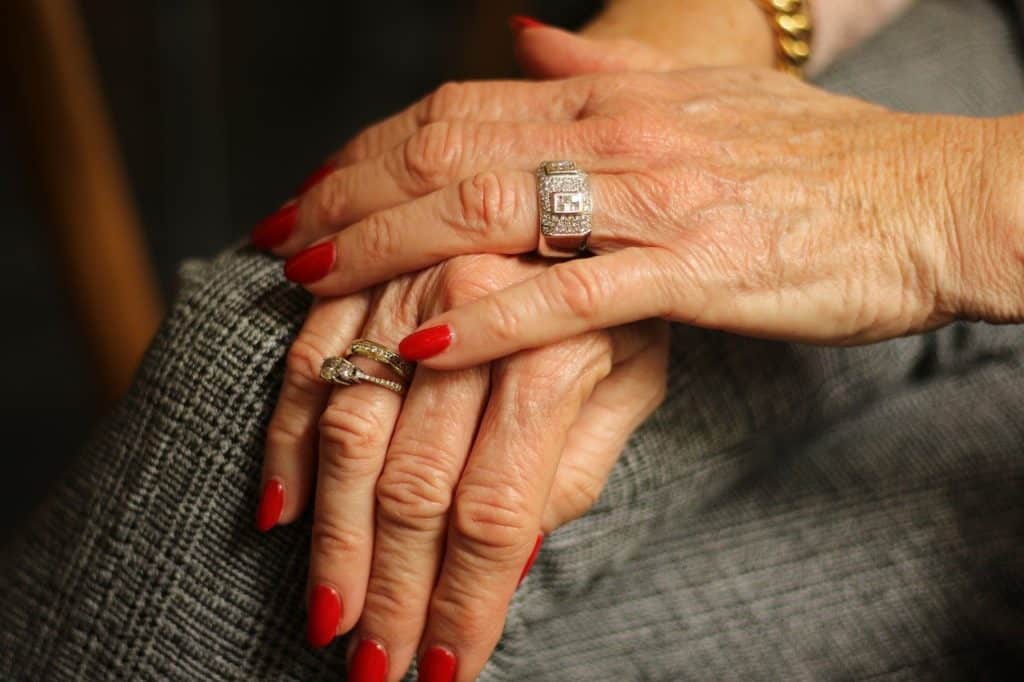
MAKING WHITE GOLD SHINY AGAIN
The key to keeping white gold jewelry shiny is having a cleaning routine set! Gently cleaning your jewelry about once a month works wonders when your jewelry is new. If your jewelry is starting to show off the base metal at many places, best way to bring back its lost shine is definitely getting it re-plated by your jeweler.
As with the cleaning routine of white gold jewelry, this is what I do about once in a month or two for my jewelry:
- Soak it in a solution of Luke-warm water and jewelry cleaning solution for roughly 8-10 minutes. I have been using this cleaner for a long time. Works well!
- Using a q tip brush, gently clean the areas around the bends, design and under the stones (these are the areas where a lot of unwanted dirt is). I use this toothbrush for the job. The bristles are REALLY soft.
- Rinse it thoroughly with water
- Pat dry using a soft cotton or muslin cloth
- Drying the areas where water accumulates using a dryer on cold setting
- Softly polish it using a polishing cloth
- Once it is completely dry, it either wrap the items in a soft cloth before putting it away in a box or keep it in jewelry storage bags. (away from moisture and safe from scratches)
Can you get scratches out of white gold?
Yes, you can get scratches out of your white gold jewelry, either at home or with the help of your jeweler, depending upon how deep and visible the scratches are. While the appearance of mild ones can be tackled at home, for more visible and deep ones, you need to visit your jeweler. At home, all you need to do is, simply clean the piece of jewelry and gently polish it. This will help buff out the minor scratches.
The jeweler will remove scratches by any of the following methods:
- using a polishing wheel to remove white gold jewelry.
- re-plating the jewelry if the jewelry is Rhodium plated, making it look like new
Getting your jewelry polished will cost you less in comparison to getting it re-plated. Depending upon the size and the complexity of design of your jewelry, the cost of getting your jewelry polished can be between 30$-70$. Getting it plated with Rhodium will cost you between 50$-120$.
How do you polish white gold?
Just like any other piece of jewelry, you can polish your white gold jewelry at home. For this, you can use any soft jewelry polishing cloth. Cleaning your jewelry prior to polishing it will help you achieve better results. If you do not want to follow the complete cleaning routine, try and soak it for a couple of minutes in warm water and any mild jewelry cleaning solution. Rinse and then dry it using a dryer on medium-cold temperature setting. If you have time at hand, you can also let it air dry before you polish.
How to clean white gold diamond ring?
Rings is one jewelry item that incurs a lot of damage as it comes in contact with many different surfaces, materials and chemicals. Cleaning your rings regularly will help keep them looking like new for a long time. Now let’s understand how you should clean your rings.
The cleaning process of a white gold diamond ring is quite similar to white gold cleaning process as discussed above, with only a few differences. One of them is not actually in the cleaning process, but before it even starts. Before you actually get to cleaning your ring, inspect it carefully to see if any part if damaged, especially around the stones or areas with more intricate designs. If it has other smaller stones, check if all of them are intact and held firmly. Knowing of any missing stones before starting the cleaning process also prevents you from thinking that you lost those stones in the cleaning process.
Conclusion
You can clean your white gold jewelry at both home and by your jeweler. Keeping it clean and being mindful and protecting it from bows and getting in contact with rough surfaces will help keep it looking like new for a long time. Rhodium plating is the simplest way to make your jewelry piece new again. However it is not permanent and lasts only a couple of years. Before you buy your white gold jewelry, be informed that it would require more care than jewelry made out of other metals.

